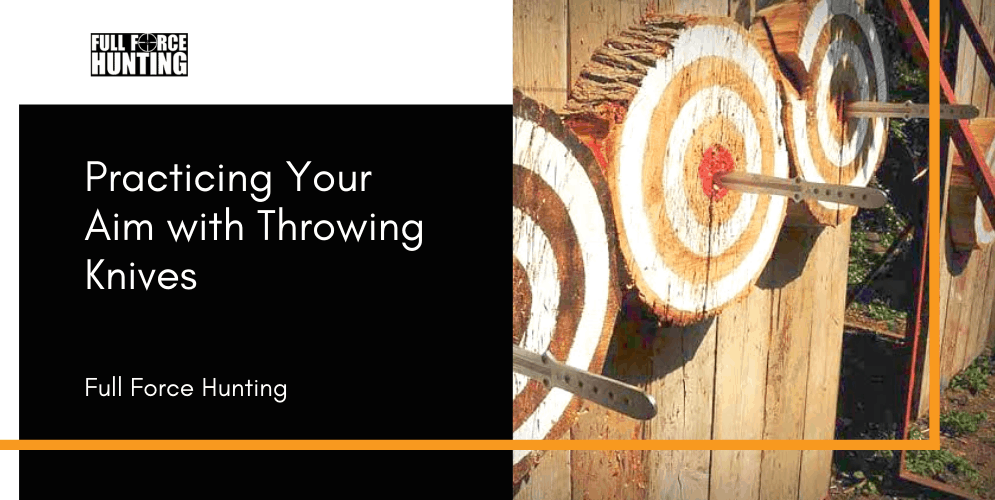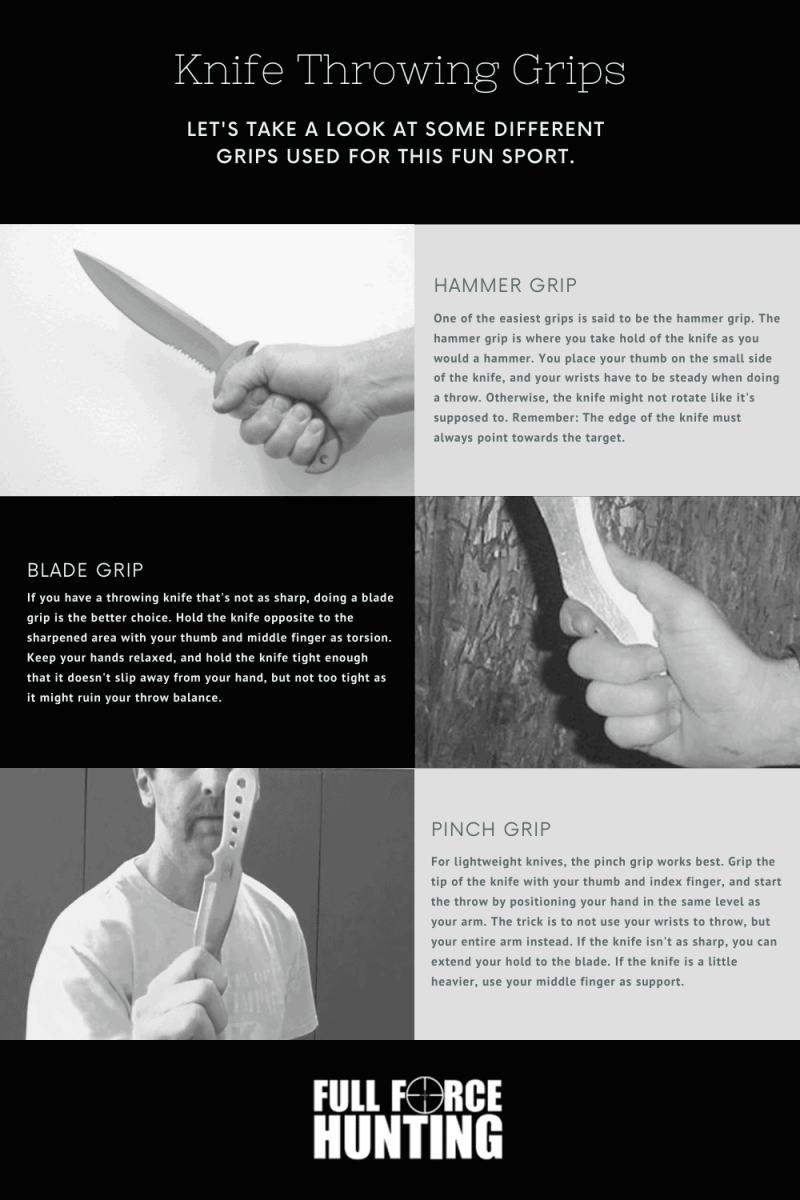Practicing Your Aim with Throwing Knives
For those who have never done it, you may be surprised to hear that knife throwing is actually a heap of fun! For a hobby that may sound intimidating at first, it's relaxing once you get into it. The amount of focus you put into hitting the target, and landing the knife successfully after, gives you an adrenaline rush and makes you want to go for another throw. In fact, the hobby's gotten a lot of people hooked.

To start, you will only need throwing knives, a practice target, and some free time! Knife throwing is a great exercise for the brain, and it gets your competitive spirit going. Who knows, you might just see yourself joining knife competitions in no time!
Knife Throwing Grips
Let's take a look at some different grips used for this fun sport.
Hammer Grip
One of the easiest grips is said to be the hammer grip. The hammer grip is where you take hold of the knife as you would a hammer. You place your thumb on the small side of the knife, and your wrists have to be steady when doing a throw. Otherwise, the knife might not rotate like it's supposed to. Remember: The edge of the knife must always point towards the target.
Blade Grip
If you have a throwing knife that's not as sharp, doing a blade grip is the better choice. Hold the knife opposite to the sharpened area with your thumb and middle finger as torsion. Keep your hands relaxed, and hold the knife tight enough that it doesn't slip away from your hand, but not too tight as it might ruin your throw balance.
Pinch Grip
For lightweight knives, the pinch grip works best. Grip the tip of the knife with your thumb and index finger, and start the throw by positioning your hand in the same level as your arm. The trick is to not use your wrists to throw, but your entire arm instead. If the knife isn't as sharp, you can extend your hold to the blade. If the knife is a little heavier, use your middle finger as support.
One great tip to take note: For every throw, you must shift your weight to the left foot while the right arm with the knife is brought to the front. It's important to get your arms, upper body, hips and legs to move together as you throw. Never use your joints as it might get injured.
You and the Target
In improving your knife throwing accuracy, try looking at the target in a different manner. Instead of aiming to land on a whole area, try aiming at one specific point. The knife may not hit that specific target right away, but it builds a specific direction to where you want the knife to land. Your brain then focuses better and memorises the motions your muscles make, in order to land on that area more accurately. Full Force Hunting provides a free target practice layout for beginners and veterans alike. So be sure to download this while you are on our site.
Two other factors to consider in improving accuracy is your knife's throwing rotation, and your distance. If you throw a knife from the handle, the blade goes down first. When the knife lands on the target and the handle points upwards, then the knife rotates too much and you're too far from the target. Vice versa, if the handle faces downwards after landing, you're too close. You want to aim for a straight knife land, in which you can only see the handle when you hit the target. Remember to change one parameter at a time so you can adjust quicker.
Knife Throwing is a Great Hobby...
...and here's why. Before you get into the world of knife throwing, don't forget to shop at Full Force Hunting for sturdy knives great for both beginners and veterans alike. We provide FREE printable target practice layout to help you start with this wonderful hobby. Practice always makes perfect.


